Ravens - Powerful Symbol in Mythology & One of The Most Intelligent Species
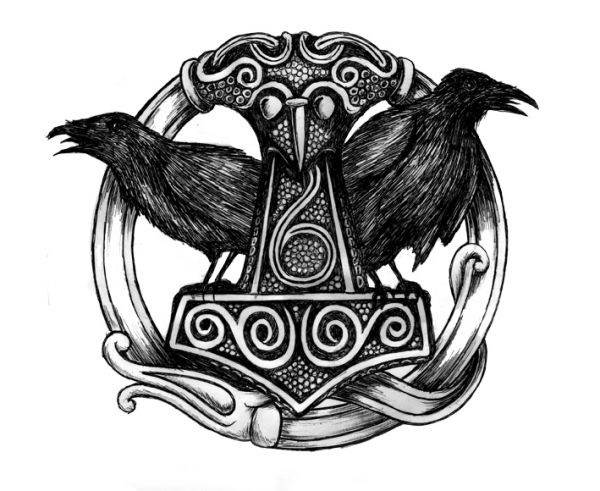
Art by Ian Ibæk Møller
I have always loved ravens and other corvids. They are mischievous, they imitate the human voice easily, and they are often topic of folklore and mythology. Even Odin had his two ravens, Huginn and Muninn, Thought and Memory. Besides strong mythological and symbolical value attributed to Ravens, they are extremely intelligent species. Newer studies suggest that the corvid family is as intelligent as the great apes, and one of the two most intelligent families of birds.
Hugin and Muninn fly each day
over the spacious earth.
I fear for Huginn, that he come not back,
yet more anxious am I for Muninn.
A part of Grímnismál, a song from poetic Edda
Mythology and symbolism
In the past ravens were associated with many symbols. Nature of the symbols differs across cultures, and sometimes even in the same culture across the span of ages. For example in ancient texts of Hebrew Bible ravens are an example of god's gracious provision for all his creatures. Perception of the ravens changed through time. In the new era, they are viewed as the symbol of vice, while dove is seen as a symbol of virtue. The belief was that raven is one of the only three beings that mated on the ark, during the great flood and for that act it was punished.
In ancient Greece, ravens were associated with Apollo, the god of prophecy. They were god's messengers to the mortal world. Apollo’s ravens were white, but on one occasion, he sent a raven to spy on his lover Coronis. After the raven returned with the news that Coronis was unfaithful, Apollo in his fury scorched the raven. Animal’s feathers turned black and that is why all ravens are black to this day.
As ravens were associated with Apollo, they were used as a means for divination. Raven flying from east or south was considered a favorable omen. Those flying from the north or west might be considered as bringers of bad luck. The direction of the flight wasn’t the only important factor, number of ravens in the flock and their color was also considered in divination.
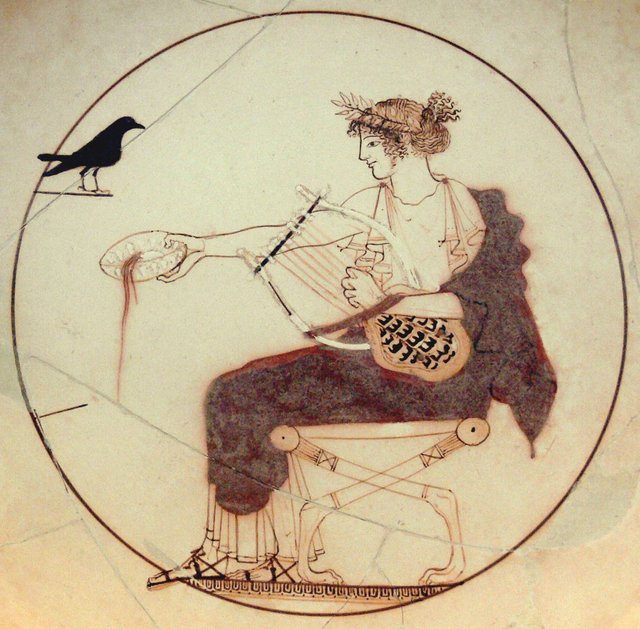
In the lore of Tlingit, Haida and other northern Native Americans a raven was both a trickster spirit and the creator of the world. The most interesting story about the raven in Tlingit folklore is the one concerning his responsibility for placement of the Sun in the sky.
The story starts with Naas-sháki Shaan – The Old Man, who was very rich. Among his riches were three legendary boxes. One contained the stars, second contained the moon, and in the third was the sun. The raven decided to steal the stars, the moon and the sun from Naas-sháki Shaan.
He transformed himself into a hemlock needle and dropped into the water cup of the Old Man’s daughter. She became pregnant and gave birth to the raven in the form of a boy. The raven in the form of baby cried constantly until the Old Man gave him the Box of Stars. After playing with it for a while, the Raven opened the lid and let the stars escape through the chimney into the skies.
Later Raven Cried for the Box of the Moon, and after some time the Old Man blocked the chimney so the moon couldn't escape, and gave the Box to the child. Raven played with the moon for a while and then rolled it out the door from where the moon escaped into the sky.
In the end Raven cried for the Box of the Sun, and Old Man, loving his grandson gave the Box to the Raven. Raven was aware that he couldn't roll it out the door or toss it up the chimney because they were carefully watched now, so he waited for everyone to fall asleep. Once everyone was sleeping he turned into his bird form, grasped the box in his beak and flew up and out of the chimney. When he got to the sky, he opened the box to show those who don’t believe him that he has the sun. He then carried the sun high into the sky and placed it there. The sun remained in the sky ever since.
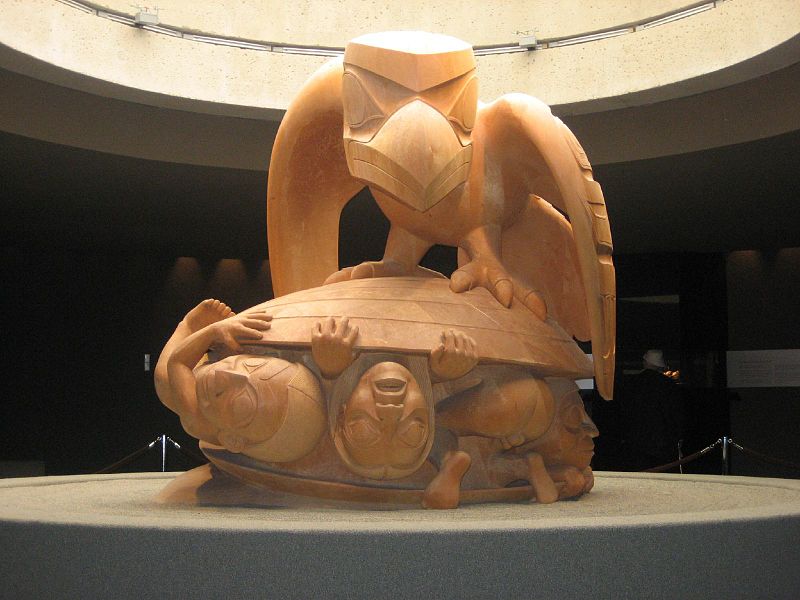
A depiction of the Haida creation story, where Raven opens an oyster shell on the beach to find the first Humans
Sculptor: Bill Reid, University of British Columbia Museum of Anthropology
Photographer: Joe Goldberg
In Celtic mythology Morrígan ("phantom queen") was the goddess associated with war and fate. One of her roles was foretelling doom and death in battle. When she was carrying out that role she usually appeared as a raven or crow.
Finally, my favorite ravens are Huginn and Muninn, the two ravens of the Allfather Odin, the head god in the Norse Mythology. Huginn represents Odin’s thought, while Muninn represents his memory. Every day Odin sent his ravens to fly all over the Midgard (the Earth) and collect the information for him, later they would return to him and perch on Hliðskjálf (high seat of Odin from which he can see into all realms), thus keeping Odin informed of many affairs. Huginn and Muninn are often mentioned both in poetic end prose Edda (oldest manuscripts of Norse mythology) and are generally held in good regard by the old Norse peoples. They are, in fact, so important that Odin himself was often called the raven god.

Art by Carl Emil Doepler, 1882.
I will cover these and some of the other myths related to ravens in greater detail in my posts about specific mythologies and deities. Here they serve the purpose to demonstrate how ravens were held in great regard for ages, but they were forgotten at some point in time. People started to view them as ordinary birds and pests. Only recently science has discovered that they are in fact one of the most intelligent species in existence. With this discovery, we can conclude that their role in mythology is more than deserved.
In the rest of this article, I will cover reasons for raven’s intelligence based on their brain biology, experiments which prove that intelligence and some interesting anecdotes about ravens. If you want to read more about mythology, follow me on steemit and check out my article about Haitian Vodou here.
Intelligence
Corvids owe their huge intelligence mostly to three following factors:
- Structure of their brain and their brain size relative to body mass
- Long lifespan which allows them to accumulate knowledge throughout their life – wild corvids live 20 – 30 years
- They are very social species which allows them to accumulate knowledge by learning from others
Experiments
Some proofs of raven's intelligence comes from brain scans and anatomy of the brain, but a lot of them were discovered through experiments conducted with ravens. They are amazing puzzle solvers and sophisticated tool makers. They are also one of the two known species that craft and use tools in the wild. We know that they are able to reason and solve problems using intelligence by giving them puzzles in the environment they are not used to.
One of the experiments with ravens involved a long tube with a small basket at the bottom which ravens couldn’t reach. Each raven participating in the experiment was given a piece of straight wire. All of them had similar reactions, and all of them successfully got to their snack.
At first, raven tried to pull the basket using the friction between the basket and the tube. It quickly realized it wouldn’t be able to pull it out that way, and without further experimentation raven stepped on the wire with a talon and used the beak to create a small hook. Raven than hooked the basket and pulled it out. It is a puzzle that most of the 4-year-old children fail to solve as the problem solving part of the brain isn’t developed enough at that age. It is a clear indicator of raven’s intelligence. Species without a large forebrain and spatial intelligence wouldn’t be able to realize something like that without long conditioning.
They understand the basics of geometry and physics of the fluids. There was a set of experiments involving water and food in a tube. Ravens had to put pebbles in the tube to raise the water level in the tube in order to reach a piece of meat floating on top of the water. Experiments showed us that ravens understood that only the volume of the pebble is important in raising the water level as they ignored the heavier pebbles and used only the light ones. They also quickly realized how it makes more sense to put pebbles in a thinner tube with less water than in a wider tube with a lot of water inside. Those and many other experiments show us how ravens are able to distinguish weight, shape, and material and understand how they can apply each of these factors to their benefit.
I couldn’t find the video of this experiment done with a raven, but here is the video of the same experiment done with a crow. They are part of the same family of birds, and they are both equally intelligent, so this one should serve the same purpose :)
Another experiment done with ravens took time over a span of eight years. It was done to determine their face recognition abilities and their memory. Scientists from the Wildlife Science department at the University of Washington put on a mask and went around the campus trying to capture the ravens. Ravens don’t like to be captured and this instilled a strong emotional response in ravens. Ravens didn’t change their behavior towards other humans on the campus, but whenever someone wore the mask they would move away, follow him from a distance and caw at him as if scolding and driving him away. When scientist used a very similar mask to that one, most of the ravens realized it is not the same “person” and treated it as any other person, only a few dimmer birds had reactions to that mask.
After eight years scientists again put the mask on and walked around the campus. An interesting thing happened then. Ravens had the same reaction as 8 years ago. The significant discovery of this experiment was that ravens teach each other about things that are in distant in space or time. We know that because most of the ravens this time weren’t even born when the first part of the experiment was conducted. This was still not enough to prove the teaching part, so another experiment was conducted. A few ravens were captured and a person wearing a completely different mask entered the room with ravens holding a dead raven. Ravens were later released from captivity and a few weeks later someone wearing that mask walked down the campus. Instantly, all the ravens had hostile reactions to the person, although they have never seen that mask before. This shows an amazing level of sophistication in raven’s language and teaching abilities.
Brain biology
It is easy to fall into a trap of thinking that large brain alone means huge intelligence. It is important to understand that the brain has to regulate all bodily functions. Animals with larger organs require a larger brain to function properly. An important factor that determines intelligence is the brain size relative to the body mass, and corvids have huge brains relative to their body mass. Other important aspect of the brain of the corvids is its structure. Similar humans, corvids have large forebrain. The forebrain is used to assess the information from sensory organs. In addition forebrain’s function is problem-solving as well as other processes such as imitation and insight.
Experiments I described earlier show us that corvids are known problem solvers. Even if you haven't heard about those experiments before, you might have noticed them solving some problems they encounter in their native environment. If you live in an area populated with ravens you might have noticed how they use cars to crack walnuts too hard for them to break. I regularly see ravens throwing walnuts on the road next to the traffic lights and waiting for the light to turn red so they can pick up their cracked walnuts.
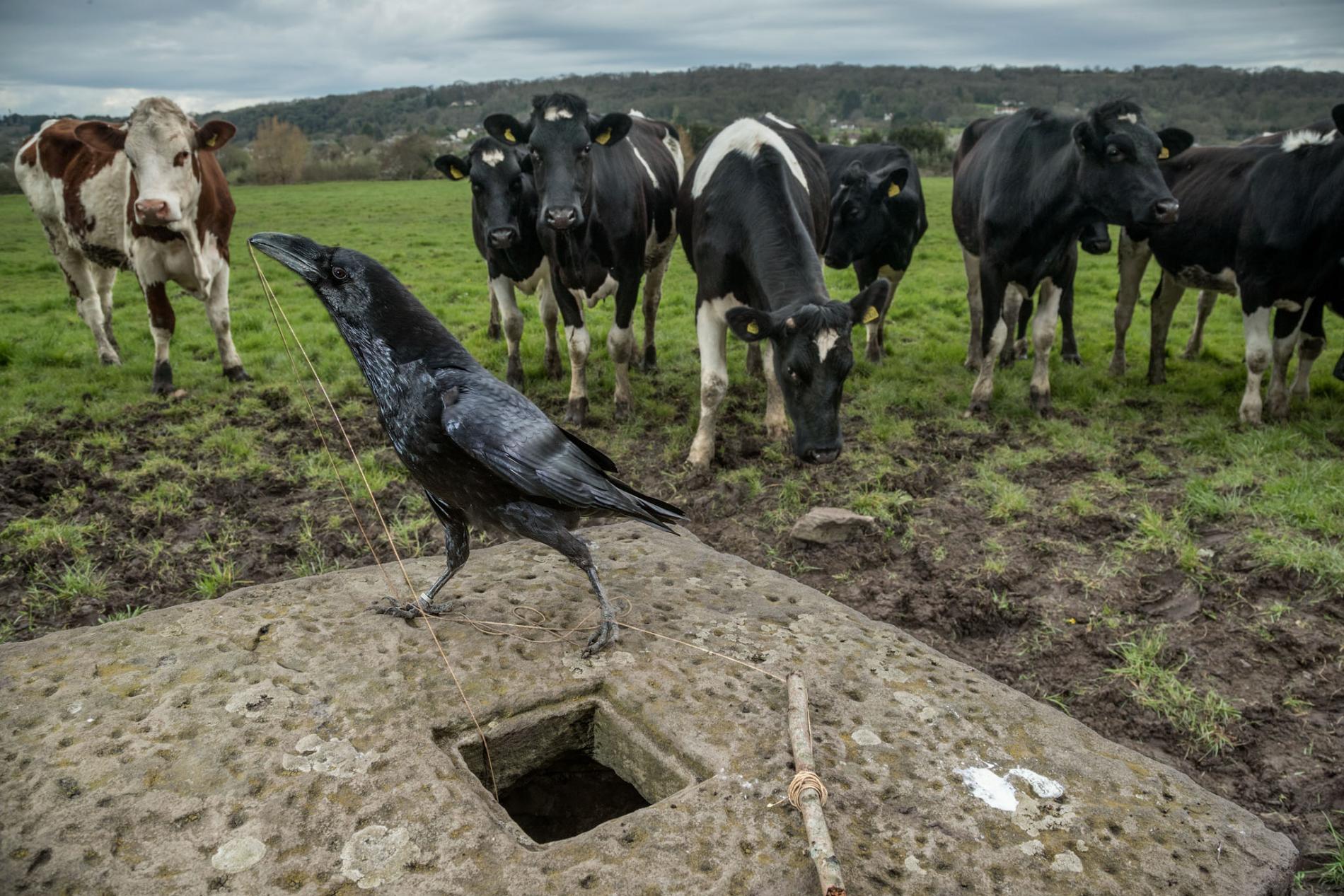
Photography by Charlie Hamilton James
Corvids have very developed hippocampus. Hippocampus is a part of the brain that plays an important role in episodic, declarative and spatial memory. It is also responsible for navigation and approach-avoidance conflict processing. This allows corvids to assess the information they have accumulated through their long life (episodic memory) and use their forebrain to solve the problem at hand.
Their developed hippocampus allows them to memorize facts (declarative memory), but why is that so important?
I already mentioned how corvids are social birds, and that they developed a complicated language. They are also one of only four known living species (in addition to bees, ants and humans) who have demonstrated the capacity to communicate about objects or events that are distant in space or time from the communication itself. When you put those three things together the result is that corvids are able to memorize facts, and use their complicated language to teach them to their wide social circle and younger generations of their flock.
Approach-avoidance conflict processing essentially means that corvids are capable to avoid short term gains and aim for the long term gains. When species without this part of a brain gain information they react based on the information right away. Corvids, like humans, have the ability to restimulate the part of the brain that was first stimulated by the information and reconsider it instead of reacting on it right away.
Finally, they have developed Amygdala which is the part of the brain with the role of formation and storage of for memories associated with emotional events. It allows corvids to memorize, places, events and places which invoked specific emotions (for example fear, by trying to capture them, or satisfaction because they found a lot of food at the location) and warn other members of their flock.
Personality and anecdotes
Ravens are mischievous, social and very playful beings. They also easily remember other ravens. They usually have only one mate and they are exceptionally faithful to that partner. In the flock, they have a clear hierarchy. Each raven knows what his place, and what every other raven's place is in that hierarchy. Their memory and recognition extends on other species as well.
There is an anecdote of an old lady who was feeding ravens every day. Ravens started to knock on her window and she found that adorable and started giving them more food. Ravens continued to gather around her house and watched what humans do. They soon realized what doorbell is used for and soon started landing doorknob and ringing the bell with their beaks. Although the lady loved the ravens, her husband didn't share the sentiment. Ravens irritated him, so he usually threw rocks and other stuff at them.
Ravens liked the old lady, but didn't like her husband, and they showed it clearly, every day they landed on the car and craped all over his side of the windshield. What is truly remarkable is that when they changed sides, ravens noticed and they changed side of the windshield they were craping on. :)
Another indicator of raven's intelligence is the ability to have fun, just for the sake of having a good time. Lots of animals play, but they mostly play to learn abilities they need to survive (you can notice that if you watch cats playing). But raven's playing is different. It is more similar to our reasons for playing. We play to get the endorphin rush. It is clear ravens do as well, we know that because they often do things that give them no practical knowledge or skills. One popular way to have fun among the ravens is snowboarding. Reports of ravens snowboarding on can lids and bottles come from all around the world.
Besides using what they find in nature they also craft their own toys. As far as I know (and I have been searching for other species that do that) they are the only animal species who do that.
Here is a video of another member of the corvid family (a crow) snowboarding. I tried to find a raven snowboarding for you but this relative of ravens was too adorable to ignore.
Ravens alongside parrots are the two bird species capable of learning human words. It is important to understand that they don't just imitate the words, they also understand what those words are used for. There is another great anecdote about ravens that explains just how much they understand. In a dog was barking wildly. The owner of the dog went to the backyard to check out what is going on there. He heard a voice calling: "Come boy! Here you go, boy! Come, boy!" He went to the street to check who is messing with his dog, only to find a raven perched on the branch provoking the dog. For the next few weeks, the raven continued flying around the neighborhood and rounding local dogs. He would then bring the dogs to the local college and hold them at bay. When students finished their classes, the raven would fly through students exiting the college building, and the dogs ran after the raven. It is still not clear if raven did it to steal an occasional sandwich in the chaos or just because it was fun. Whatever the reason, it shows such level of ingenuity that I wouldn't believe the story if I didn't hear it in the TED talk by John Marzluff, Professor of Wildlife Science at the University of Washington.
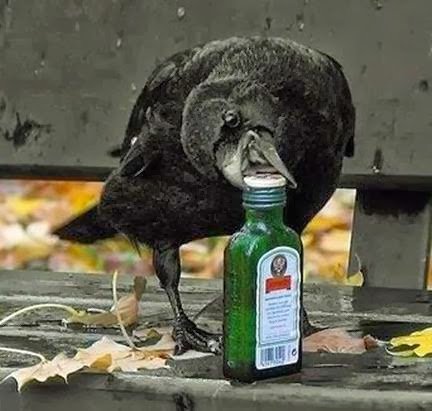
If I haven't made you fall in love with these mischievous creatures, I hope I have at least piqued your interest about ravens. Next time you are passing by a raven consider offering it a snack, maybe you will get a new drinking buddy. If not, at least you might avoid getting your windshield desecrated. :D
This morning when I logged in I realized more than a half of my post has disapeared and this little tool saved me, check it out in case something like this happens to you
Great post, very detailed. I learned a lot more about ravens than I thought was possible. I love the mythology you included here.
Amazing little creatures. I just remembered I should have added a video of two ravens instigating a cat fight here. They realize they are smarter than cats, and they abuse that knowledge :D
my cat :) @arrrados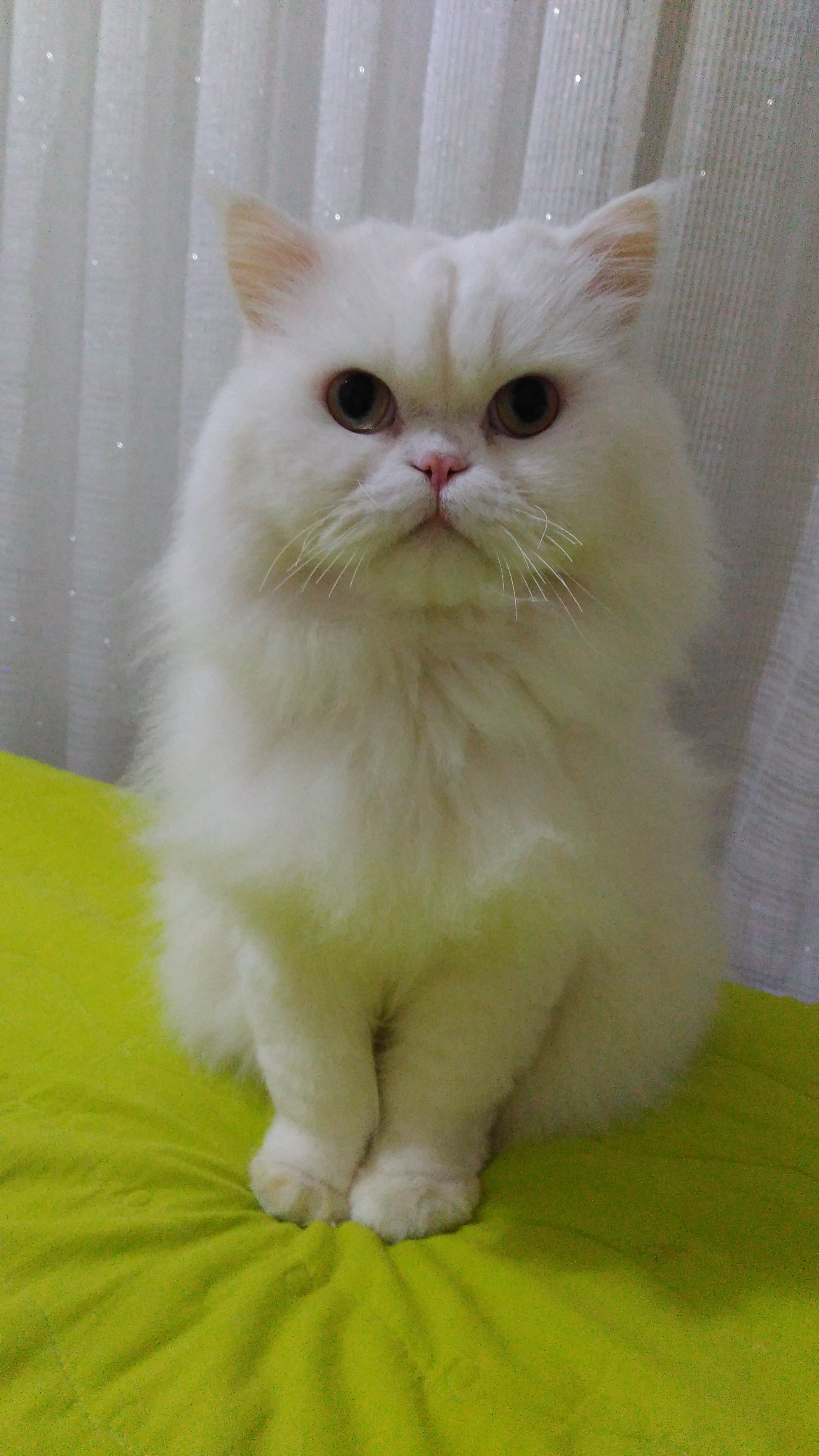
Spam is discouraged by the community, including comment spam.
Tips to avoid being flagged
Thank You! ⚜
sorry why my picture of my cat is related to spam
i dont understand!!!
why????????@spaminator
@gmzct Because you posted exactly the same picture in comments to several posts with topics completely unrelated to cats. In addition you didn't put any effort into sharing insight or showing any interest for the topics of the posts in question. You have also failed to demonstrate in any other way that you have actually read the aforementioned posts. I hope you understand now.
I see no relevance of your cat to this post...
yes
it made you feel uncomfortable that my cat was here
@arrados
Only connection I saw was how it would make a good lunch for the ravens, so I was wondering if it was here as the offering for the raven Gods :P
@arrrados hahaha I think the idea of having lunch is a terrible idea:)
There was also some research investigating the ability of corvids to perform higher-order, relational matching tasks. In other words, they understand analogies!
From the article on sciencedaily.com:
'The study involved two hooded crows that were at least 2 years old. First, the birds were trained and tested to identify items by color, shape and number of single samples.
Here is how it worked: the birds were placed into a wire mesh cage into which a plastic tray containing three small cups was occasionally inserted. The sample cup in the middle was covered with a small card on which was pictured a color, shape or number of items. The other two cups were also covered with cards -- one that matched the sample and one that did not. During this initial training period, the cup with the matching card contained two mealworms; the crows were rewarded with these food items when they chose the matching card, but they received no food when they chose the other card.
Once the crows has been trained on identity matching-to-sample, the researchers moved to the second phase of the experiment. This time, the birds were assessed with relational matching pairs of items.
These relational matching trials were arranged in such a way that neither test pairs precisely matched the sample pair, thereby eliminating control by physical identity. For example, the crows might have to choose two same-sized circles rather than two different-sized circles when the sample card displayed two same-sized squares.
What surprised the researchers was not only that the crows could correctly perform the relational matches, but that they did so spontaneously--without explicit training.
"That is the crux of the discovery," [Ed] Wasserman [, a psychology professor at the University of Iowa] says. "Honestly, if it was only by brute force that the crows showed this learning, then it would have been an impressive result. But this feat was spontaneous."'
That means corvids are the first non-primate animal that exibited true analogical reasoning. Exciting, huh?
I'm a big corvid fan and it's kind of a shame that we had only recently began researching the intelligence and social life of these wonderful birds. Thank you, Arrrados, for giving them some much-deserved love!
I leave you with a video of about a Vancouver crow named Canuck and his human best friend:
Thank you very much for this comment my friend! :D I haven't read about this experiment before, that is amazing! I will watch the video a bit later, but I believe that a corvid fan like you has left me with something worth watching :D
Asatru much? :D
Excellent post, if I could I would upvote it 10 times :)
I was scrolling down some posts and so the first image from your post... MJOLNIR!?!? This should be interesting! And I wasn't wrong, it was.
Not so much Asatru, as mythology itself, I opened this blog mostly to write about mythologies and beer :D
But when it comes to Norse mythology I prefer the original, I didn't explore Asatru much, but I did read both poetic and prose Edda. Those two ravens in the first picture are actually Huginn and Muninn, I picked them as they as the first picture because I love the concept of them being Odin's Thought and Memory and derived meaning the song that comes later gets from that fact.
I intend to write about Norse mythology at some point as well, but first I wont to get my Vodou series going :)
If you are into mythology check out my first post about Vodou as well, you might like it ;)
I like mythology but I prefer Norse and Slavic. I own Sturlusons Edda, and have some Runas tattoed. I know all about Huginn and Muninn :)
I am looking forward to your posts about Norse mythology, I will read them carefully.
No pressure :D
I intend to go for Slavic, but later, I haven't been blogging in years, so first want to practice a bit on the others. Slavic has to masterfully delivered. The sources of Slavic mythology are so scarce and inconsistent on the internet and I would like not to follow in those footsteps. :D
Which one do you have, poetic or prose, and in which language?
Snorri Sturluson
"EDDA
Gylfaginning/Obmanjivanje Gylfija"
in Islandic and Croatian language
wow, interesting
Thx
You win a follower here, I'm always interested on mythology, so thanks for taking the time for make this post.
Thanks :D There will be a lot more of it. Next mythology post will probably be about Baron Samedi, you can read my post about Vodou as it serves as introduction to Baron Samedi :)
I just realized you are the girl who had a Mortal Combat Cyborgs post :D You already earned a follow from our group profile last week with that post :D
haha woot!! nice, thank you!
So amazing guy your post I like it..that true
Thanks!
Ah this is awesome! I absolutely love mythology and biology, and I hope I can learn more about it from you soon!
Thank you for sharing!
Thank you very much, I am not expert on biology I only explore it when I am interested in specific topic, but lots of posts from about mythology will be coming. The next one will be about Baron Samedi, a loa from Haitian Vodou. :)
woah cool! I am excited for more!
Use the mythology tag and I will see it.
a buddy of yours told me your in to marketing read your blog too noce job on this one guy
Thanks :) Which buddy of mine?
@thinicola
Svaka čast za ovaj tekst, mislio sam da znam mnogo o ovim pticama međutim ispostavilo se suprotno. Obavezno nastavi da pišeš lični blog, odlične su ti i teme i stil.
A kako i ne bi bile, kad organizuješ Istrakon. Svake godine kažem da ću napisati i poslati priču i naravno nikada to ne uradim ;-) Mada lepo bi bilo i posetiti ga...
U svakom slučaju nastavi svoje pa se čitamo dalje!
Haha hvala ti, dođi na Istrakon, najzabavnija konvencija u Hrvatskoj :D Ali dobro podmaži jetru, puno se pije na Istrakonu ;)